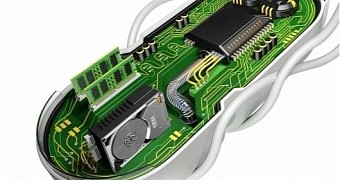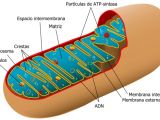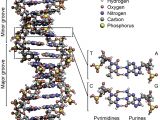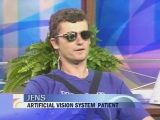So it seems that someone has finally released a music album stored on DNA. Yes, real, actual DNA. Deoxyribonucleic acid, the blocks of life, or rather the ball-riddled helix since the compound is depicted more as little spheres than blocks these days.
Sci Fi is rife with enhanced humans, just like fantasy fiction is littered with humanoid or not-so-humanoid races that are so much better than us in one or multiple ways.
Escapist fiction does have its place in society, just like soda and flubber, so I'm not about to start casting aspersions anywhere.
What I am going to do is point out how likely it is that real technologically enhanced humans probably won't follow any single development path outlined in fiction. Instead, it will be a mix of all of them.
The most common types of “superhumans” in fiction
Barring aliens and radioactive exposure that would never work out in real life, humans in science fiction gain superior intellect, strength, speed or other traits through one of two ways: genetic evolution (whether engineered or natural) and cybernetic enhancement.
Cross-species genetics is one popular path, whereby man is given traits from certain animals in order to supplement his own.
Cyborgs are another, where the skeleton and perhaps other elements of the body, often the brain itself, are replaced by metallic and electronic alternatives for whatever reason.
Having a computer for a brain is really popular, as is ensuring perfect health and maybe high-speed regeneration through nanotechnology. Little nanites running around through every tissue in your body.
Sometimes, a character is a mix of both, maybe with several alien enhancements thrown in for good measure.
What's ironic is that “superhumans” in real life might end up using no nanites at all. Not in the way that everyone seems to expect.
The risks of having little robots running around everywhere
Just today I wrote about nanoparticles that can be injected in a body and magnetically guided to an unhealthy location to heal it. Also, there was a medicine-dispensing electronic implant that could be remotely controlled.
The problem is that the better nanoparticles and (eventually) nanobots become, the more things people will be able to do with a working radio signal or a pair of magnets. And let's not even go into the potential of misuse for the Wi-Fi activated implant. Extremists and terrorists already have enough ideas.
Same thing for computerized body parts. Mind-controlled prosthetics are already a reality, but eventually they'll become easy to turn into a liability.
DNA storage might be the panacea for controlled evolution
A single pin tip-sized drop of DNA can store as much information as several HDDs put together, and then some. And this isn't a far-off concept, but reality being used here and now. The album we mentioned in the beginning makes this clear.
What might not be immediately apparent is that this way of using DNA could make active nanites and even human-machine interfaces superfluous.
You would only need sporadic applications of nanite injections. You could, say, use a nanoparticle infusion initially, which would spread very tiny systems throughout the body, which could replace some of the recessive genes in chromosomes with some different blocks and voilà! You're storing data files in your own cells.
It doesn't even have to be in the native DNA. You could use nanobots or micro injections to deposit tiny DNA-based storage systems inside cells themselves, and tweak the chromosomes so that they are recognized as natural parts of it.
Then the possibilities start showing up. Want to listen to some music? Just use an in-ear headphone or auditory implant to read the DNA in your eardrums or some other nearby cells. Want to check a photo and don't have a photographic memory? Access the ones stored in the DNA of your retinal cells or the neurons themselves.
We could literally turn our very bodies into walking supercomputers with a dash of personal entertainment systems. It would even offer an alternative to the Sci-Fi concept of infodumping (where knowledge is directly implanted in the brain of someone). Bonus points for no chance of info loss, since backups would be created every time the cells divide. That, or the implanted mitocondria-like particles would be able to transfer over.
All the while, you wouldn't be relying on health and security risks like constantly active nanite colonies with receptivity to wireless waves, or hackable hardware.
The downside is the danger of genetically altered cells causing health problems themselves, but I'm talking about the distant future here, and a treatment for cancer will probably have been developed by then.
How would you feel about the idea? And even if you're not that enthused about implantable storage, would you buy a music album or film stored on DNA that a computer could interface with?

 14 DAY TRIAL //
14 DAY TRIAL // 



